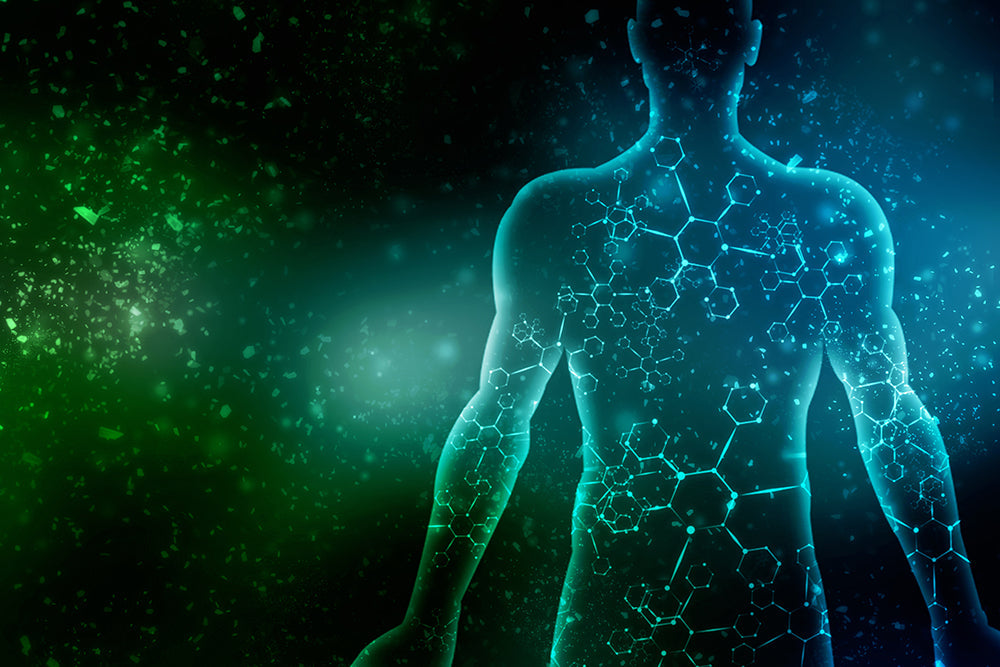
The Difference Between Macro and Micro Minerals
|
Read Time 5 min
|
Read Time 5 min
Disclaimer: The information provided in this blog is for educational and informational purposes only and is not intended as medical advice. This content should not be used to diagnose, treat, or prevent any medical condition or health issue. Always seek the guidance of your physician or other qualified health professional with any questions you may have regarding your health or a medical condition.
The human body needs more than 70 different minerals to function. You can split them into two groups: macrominerals and microminerals .
While they serve different functions, both macro and microminerals are important. Here’s a quick look at what each group does, and why you need both to function at your best.
Macrominerals are the most abundant minerals in your body. They maintain the structural parts of your biology, like your bones and the liquid around your cells. You need large stores of these minerals to keep your basic tissues in good shape. There are six macrominerals:
Calcium
Magnesium
Potassium
Sodium
Chloride
Phosphorous
Macrominerals are present in your body in large amounts—for example, calcium makes up about 2% of your body weight, and every single cell you have contains sodium and potassium. [ * ]
In some cases macrominerals also serve more specific functions. Magnesium, for example, is a major regulator of your stress response, [ * ] and sodium and potassium work together to control your blood pressure. [ * ]
But broadly speaking, macrominerals are structural. They make up and maintain your body on a physical level.
Microminerals are the 65+ other minerals your body needs. They’re involved in more specific jobs, like making hormones, controlling your inflammatory response, and regulating your metabolism.
Because microminerals aren’t as widely used, you only store small amounts of them—but they’re just as essential as macrominerals. Here are some examples of why you need them:
You need all 65+ microminerals for your body to function at its best. Because they’re so specific, deficiencies in microminerals are often harder to detect. As a result, they can quietly sap your performance and make daily life harder —usually in subtle ways like fatigue, poor sleep, gradual weight gain, and brain fog.
Though they’re present in your body in different quantities, both macro and microminerals are essential to your health. You want both groups of minerals in abundant quantities in order to thrive.
The trouble is that almost nobody gets enough minerals. The most recent nutritional survey by the CDC found that 97% of Americans have at least one mineral deficiency , and nearly 70% have two or more . [ * ]
That’s why we created BEAM Minerals . It contains the full spectrum of 70+ minerals you need, in the right ratios.
We make it easy to replenish all your mineral stores at once. All you do is take two capfuls of concentrated liquid each morning. They taste like water and give you the full spectrum of minerals—so you can be sure you’ve got enough macro and microminerals.
If you want to look and feel your best, give BEAM Minerals a try. It’s the simplest way to balance your mineral stores.
Yes, in fact, BEAM Minerals will enhance the bioavailability of all your other supplements.
Electrolyze™ is primarily composed of Fulvic Mineral Complexes . Fulvic complexes are small molecules that provide inter-cellular transport for nutritional elements into the cells and carry bio-waste out of the cells. Fulvic complexes are flavonoids , which provide many benefits in the body.
Micro-BOOST™ is primarily composed of the Humic Mineral Complexes . Humic complexes are large molecules that are extra-cellular, meaning they do not enter the cells but stay outside the cells. They are highly-charged molecules that attract, through their electrical charge, bio-waste, free radicals and heavy metals. They ultimately carry bio-waste out of the body. Thus, we call them “Nature’s Janitor”.
The quantities of each element in BEAM Minerals products are measured in “parts per million” (ppm), rather than the “milligrams” (mg). Here is the information which usually helps to understand the difference:
Milligrams (mg) vs parts per million (ppm)
In comparing our products to other supplements, people want to know how much of an electrolyte is in our products (like potassium, magnesium, sodium, calcium). Usually they are looking for an amount in milligrams (mg).
We have a hard time answering that question, because the electrolytes (and other elements) in BEAM Minerals products are measured in parts per million (ppm). So how can consumers compare?
The answer is a little complex, but here’s the high points.
The electrolytes in BEAM Minerals products are provided in “trace” amounts that are completely dissolved and thus 100% bio-available, immediately introduced into your circulation when you consumed them and will produce and active effect.
When you take a 320mg pill of magnesium, your body is only able utilize about 12-20% of it as it takes some time because your body has to digest it first. Whatever is not dissolved gets processed out of your body.
When you take a capful of liquid Electrolyze™ and/or Micro-BOOST™, you receive approximately 5.22 ppm of magnesium in which 100% of the magnesium is immediately available to your body. In addition, an important to know is that the magnesium in BEAM Minerals products stay in your system much longer building up healthy levels as you continue to take it daily.


